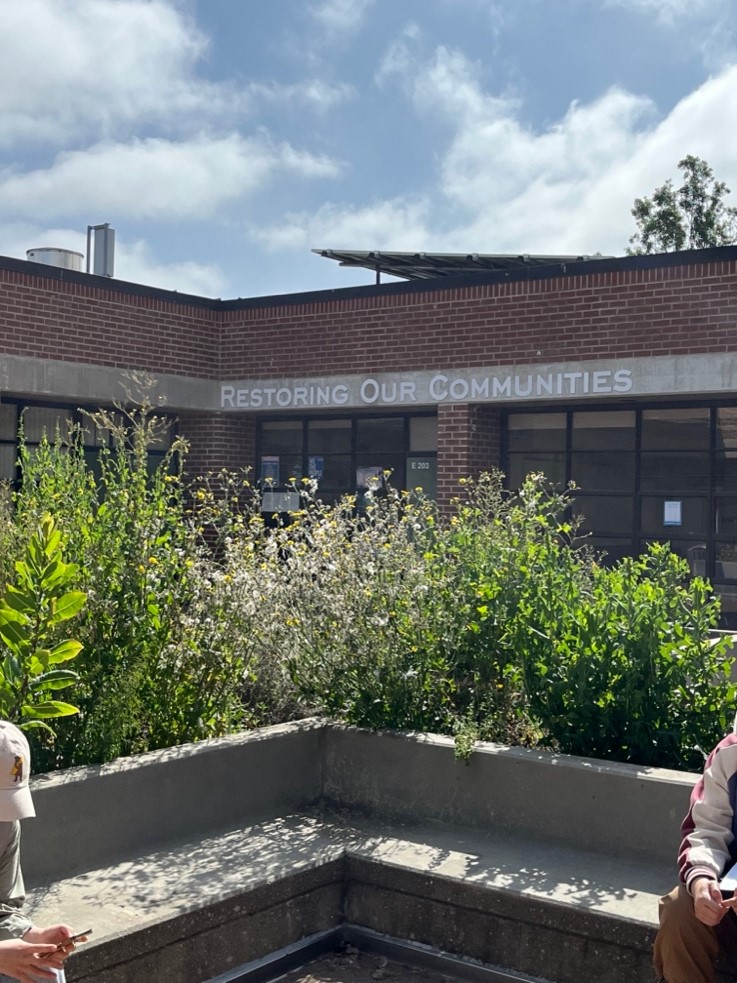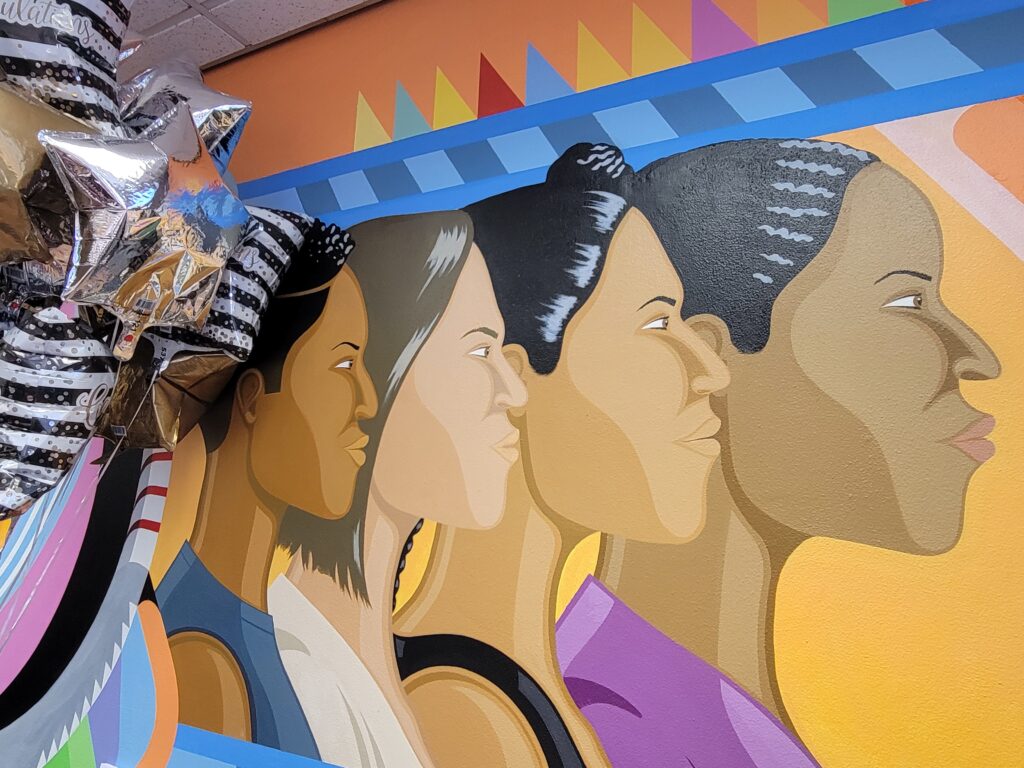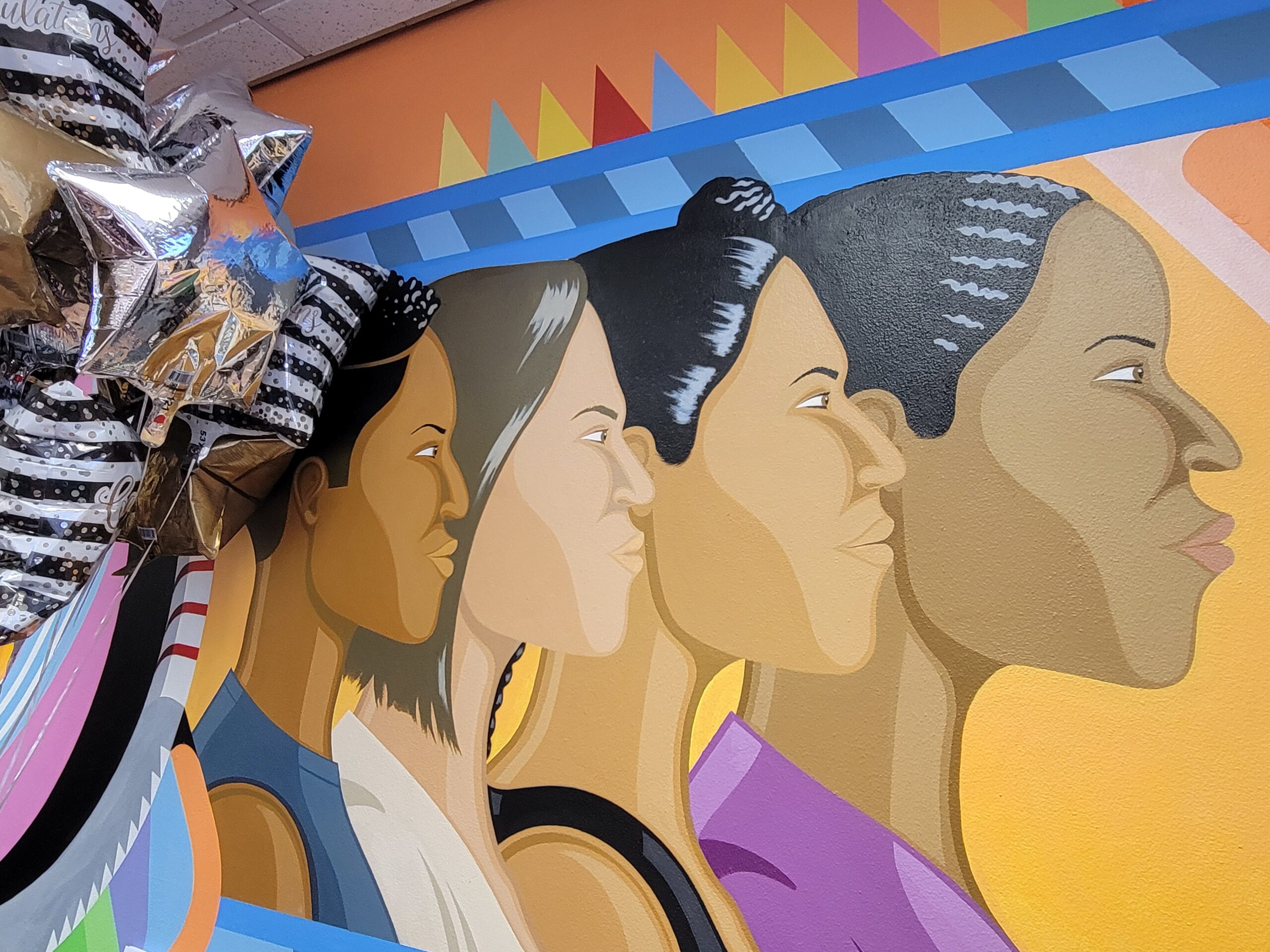Laney College is a community college located in Oakland, CA with a mission to “empower our community and to promote student success and social justice.” One program that embodies this mission is Restoring Our Communities (ROC), which provides holistic support to formerly incarcerated Laney students and to youth who are currently incarcerated in juvenile hall. Each semester, ROC serves approximately 200 students across its programs.

Our visit was hosted by Dr. Roger Chung, ROC Faculty Lead, who has an appointment in Ethnic Studies, who described the program as a means of supporting students’ “full human citizenship.” Although some frame incarceration as rehabilitation and a means of promoting public safety, the system is designed to dehumanize individuals while in custody and in ways that continue once they are released. For example, students may face financial hardship or housing insecurity due to difficulties securing employment and stable living based on their prior criminal record. Furthermore, they may be stigmatized in and outside of class based on their prior incarceration or may find it challenging to connect with peers who do not understand their lived experiences.
Recognizing the distinct needs of its students, the ROC staff developed multiple approaches to supporting their success. The ROC staff has deep understanding of the realities of incarceration, and several individuals have completed their undergraduate (and graduate) degrees after serving time in prison. They are intentional about acknowledging students’ full humanity and have helped create a space where students feel at home while they are at Laney. In service of students’ success, ROC offers peer mentoring, staff advising, academic counseling, informal tutoring, and support with transferring to another college or university. These resources are designed to promote academic success “from CTE (career and technical education) to Ph.D.” ROC also provides students with material resources in the form of transportation vouchers, financial coaching, funds for books, and support navigating housing services. Another vital resource that ROC provides access to is the Clean Slate Program, which is run by the Alameda County Public Defenders. This program is designed to help individuals clean up their Alameda County criminal records which can reduce barriers to employment, housing, education, occupational licensing, and civic engagement.

While we were at ROC, we were fortunate enough to hear from two students who spoke to the power of the program. A first-year student named Armando told us he was in “perpetual survival mode” while incarcerated and was actively discouraged from completing his GED. Nonetheless, Armando persisted, completing his GED and taking college level courses in prison. After being incarcerated for over 20 years, Armando found the support he needed to succeed in and outside of classes at ROC. He noted that program helped him adjust to freedom and find community.
Similarly, Hailey noted that ROC was instrumental in her success. She said that returning home from prison can be challenging since you have “one foot in, one foot out” and that you can be pressured to “keep fighting that hood fight.” Concurrently, Hailey’s fight has been to have her brilliance acknowledged since as a formerly incarcerated Woman of Color, she has not always been encouraged to seek out opportunities in STEM. She’s succeeding and will be completing a summer internship at Stanford before transferring to another four-year institution to pursue her degree in nursing.
Both Armando and Hailey are giving back to the ROC community. They are engaged in the ROC program that serves youth who are incarcerated at juvenile hall. As Hailey noted, it’s important to “be positive on purpose.” These students have found new purpose and community alongside many others at ROC.
As we finished our time with the ROC community, I found myself asking new questions:
- What would communities be like if more schools and social institutions were fully invested in individuals’ full human citizenship? Would programs like ROC still exist?
- How would dismantling the school to prison pipeline change the realities of those served by ROC? How would our communities change long-term?
- What would a campus look and feel like if it more fully centered the needs of formerly incarcerated students? How would the culture need to shift? What practices and policies would we need to change?
Until we can answer these questions, I’m grateful for ROC for serving as a model for how to create better, more humanizing futures alongside those who have been formerly incarcerated.
–Rosie Perez, Associate Professor

